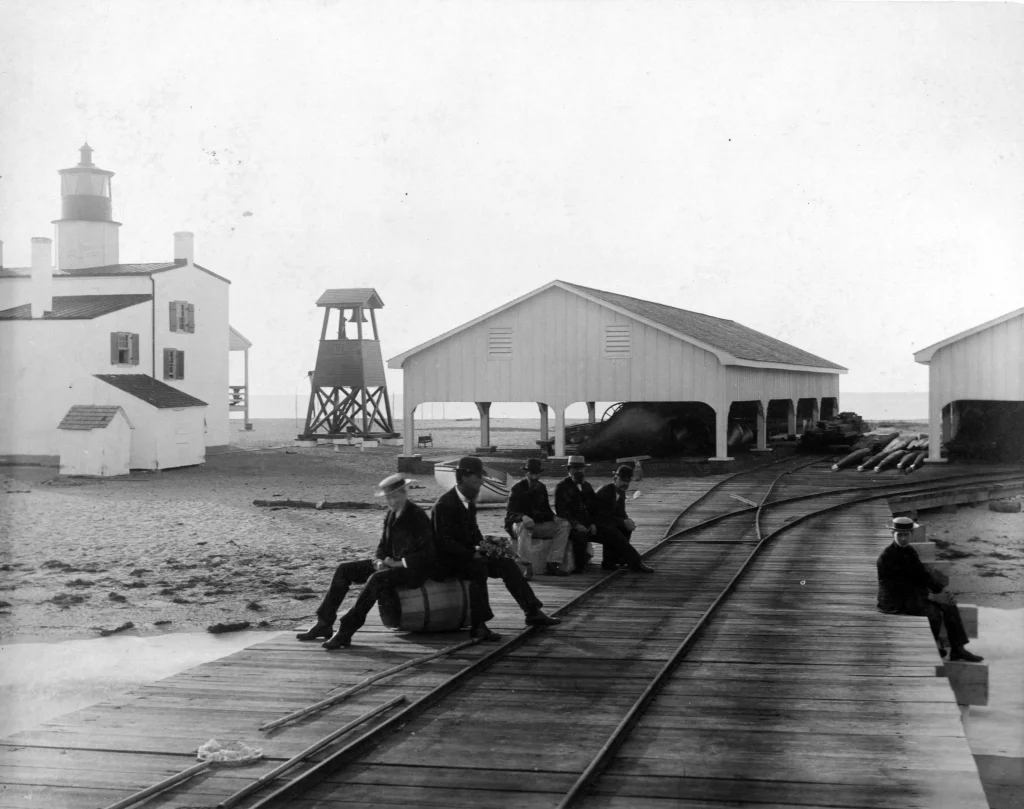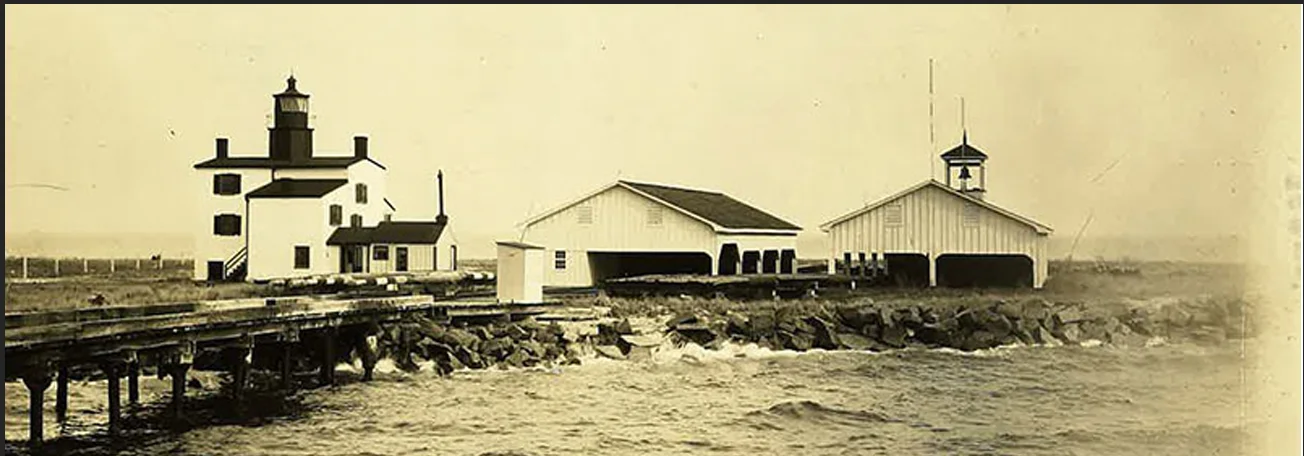Imagine being at the very southernmost tip of Maryland, looking over the entrance to the Potomac and the famous Chesapeake bay. All is calm and serene as the waves lap at the stoney cliffs nearby. Suddenly, you see a figure walking along the edge of the cliffs, pacing back and forth. Wait, he’s not pacing, he seems to be… marching? He’s wearing a dark blue uniform with a Civil War era cap on his head. It looks like he’s patrolling, maybe protecting the building behind you. Before you can take a second look, the man is gone and you’re left alone on the grounds with the historic Point Lookout Lighthouse.

The very first keeper of the Point Lookout Lighthouse near Scotland, Maryland was named James David, who set foot in the one-and-a-half story house with a light tower in 1830. Unfortunately, he died just a few months later. His daughter, Ann Davis, took over the role of keeper until 1847. The point on which the light sits was transformed by the advent of the Civil War, with the building of a Union hospital, and later a prison camp on the strategic location. 20,000 prisoners would be held in this camp, with an estimated 3,000 dying from various ailments, harsh conditions, starvation, and poor shelter. Today, a monument stands in the State Park to remember those who fell during the war.

In 1873, a fog bell was added to the repertoire of the lighthouse. Heavy fog would often roll into the bay and obscure the light, but oncoming ships needed to be warned about the dangerous shoals on the side of the entrance to the river. Without machinery to ring the bell continuously, the keepers and their families would need to take shifts to keep the bell ringing through the foggy weather, sometimes for up to a week at a time. The fog tower was later moved to the Chesapeake Bay Museum.
After 135 years of service, the Point Lookout Lighthouse was purchased by the U.S. Navy, who installed an automatic light off shore to replace the purpose of the lighthouse. The surrounding lands were purchased by the State of Maryland throughout the 1960s, forming the Point Lookout State Park. In 2006, Maryland officially acquired the lighthouse itself from the U.S. Navy. Today, the State Park is renovating the lighthouse and grounds to welcome visitors.

The most famous part of the lighthouse, however, is the extraordinary amount of paranormal activity observed on the grounds and within the lighthouse itself. The website of the lighthouse even includes a section for gathered information and potential evidence of spirits inhabiting the lighthouse from the beyond. Dozens of photos, EVPs (Electronic Voice Phenomena) and personal sightings of apparitions have been reported over the years.

Internationally-renowned parapsychologist Dr. Hans Holzer conducted an investigation within the lighthouse and allegedly captured 24 separate voices, unusual smells that disappeared, cold spots, and more. One of the voices captured was believed to be that of former keeper, Ann Davis, who is believed to appear as an apparition at the top of the light tower’s steps. She said “Let us not take objection to what they are doing.” Photographs have captured faces in the reflection of the glass in the light room, phantom soldiers in the background, and many orbs of unexplainable origin. Another male spirit’s voice was captured saying “Fire if they get too close,” alluding to the legends of soldiers from both sides of the war losing their lives on the property of the lighthouse.
The Point Lookout Lighthouse is currently closed to the public, but with aspirations to open not just to history buffs and lighthouse lovers, but to paranormal investigators and thrill seekers. As those in the Point Lookout Preservation Society work hard with the State Park, it’s clear that one day this will be a bustling tourist attraction and a glimpse into the history of Maryland. It might also offer the chills and frights that some seek, and maybe a sighting of a soldier or two. Make sure to say hello to Ann when you can finally visit for yourself.
- About the Author
- Latest Posts

Born in Death Valley and raised on the prairie, Deborah is a Wyoming-based paranormal researcher and University of Wyoming graduate. Her interests lie in folklore, history, symbolic interaction and research. She also researches the paranormal academically and is a graduate student studying sociology.


